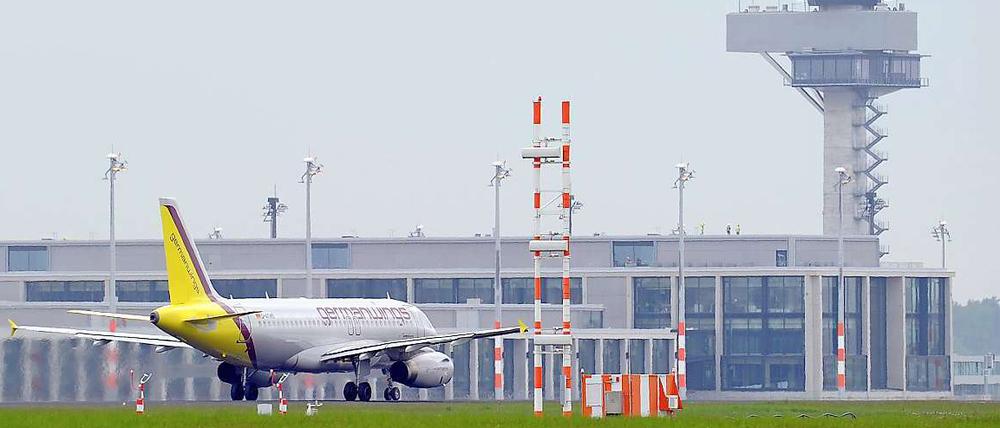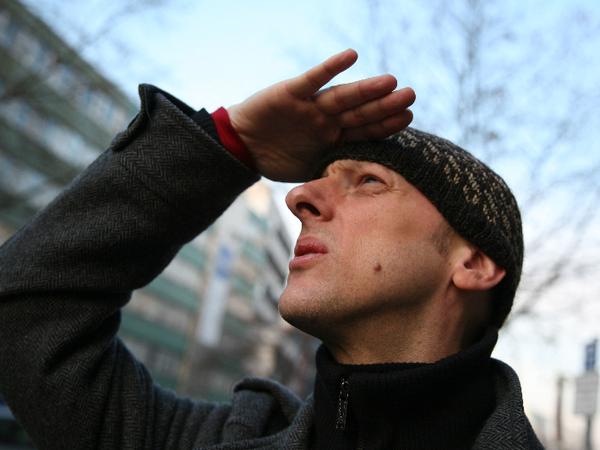
© dpa
Espiner's Berlin: Berlin from the air
Tegel isn't closing, Willy Brandt isn't opening, but Mark Espiner learns a lot about Berlin from the people flying in and out of Schoenefeld – like how a few Russians could soon be charging you rent...
Even I got swept up in the wave of Tegel nostalgia – which is odd because I rarely fly in or out of it. I landed there last month for what I thought would be the last time, and with the threat of its loss I got a bit carried away documenting it in a retro style. How do you like my fake Polaroid snaps of the soon-to-be decommissioned airport? Actually, now we have still got a year left to enjoy it.
I won’t bang on here about the much-loved landing strip: like how it’s named after the birdman of Berlin, how its architecture looks like a Star Wars Lego model (really, it does, take a look) or how it was built in 90 days by the Berliners themselves. That will all be in the Tegel obituary when it finally passes away.
It’s hard to imagine anybody becoming dewy-eyed at Schoenefeld disappearing, though. But I’ve become strangely attached to the less-loved airport, the shabby cousin of Tegel and Tempelhof. And since I did it for Tegel, here are my nostalgic Polaroids of the airport that once hosted Aeroflot, used only to run flights to brother communist countries, and now is the cheapest way in and out of Berlin.
Right now, I’m writing this up in the air. Over the left wing the TV tower is twinkling and spread out below is the city’s glittering necklace of lakes.
The view through the porthole isn’t the only picture of Berlin that I get on my flights out of Schoenefeld. The passengers I end up sitting next to (after the inimitable German “queuing” system to get on the plane) give a fascinating snapshot of where the city is heading, of what place it holds in the imagination and feelings of the people travelling to and from it, either visiting or coming home.
Some nastalgic Polaroids of the airports:
I’ve just been chatting to Daddy Freddy. A rapper who’s in the Guinness book of records as the fastest in the world. He’s just played at a club in Friedrichshain - is on his way to Tokyo to do a few more - and is back in Kreuzberg (where he used to live) in June. “Berlin is cool,” he says in his Jamaican drawl and tells me how I can get the best Jamaican food in the city. I’ll write about that when I’ve been there...
Daddy Freddy is more positive and a world apart from the eminent Cambridge professor and academic who used to have almost rock star status among his students. He sat next to me on the easyJet Luton to Berlin a few months back. “Berlin has become a second-rate American city”, he spat out before waxing lyrical about the pre-Wende times when he lectured at the Humboldt and loved walking around East Berlin, enjoying its unusualness. He doesn’t like Berlin so much any more, although he still comes here to lecture. Mind you, he’s not that happy with the UK either. He was shocked by the way it was going and called it “Sicily without the charm”, referring, I think, to the practices of Britain’s super rich, the press and the police.

© Thilo Rückeis
Besides the rapper and the academic, I’ve easyjetted with the man who makes Banksy’s sculptures, a tattoo artist flying to Berlin to get his teeth replaced with metal ones, installed across the border in Poland (metallic dentistry is cheap there, apparently), a computer programmer who moved here to ride the start-up tsunami in Prenzlauer Berg’s “Silicon Allee”, a neuroscientist from Dahlem, a Robotics expert, a man who makes a whole year’s salary by selling things for a few weeks at the Christmas markets, and a British engineer who commutes from Bristol to Berlin to work for that once most British of companies, but which is now based in Berlin Brandenburg, Rolls Royce.
All of these are interesting folk coming and going to Berlin and adding to the cultural and industrial capital in some way. But none of the above are going to fundamentally change the city’s landscape.
But then I met a sharp-suited, charismatic chap from London. We talked about Berlin and what he was doing there and he told me that he was helping a client buy property. Ah, an estate agent, I asked. No, he answered, not quite. He was simply trusted by his Russian clients as someone who knows the city and can negotiate with the local estate agents. As we talked it emerged that his clients weren’t just any old clients. They were rich Russians. Very rich Russians. And he wasn’t just helping them buy any old penthouse either. He was indentifying investment flats, hundreds of flats, blocks of flats in the city. The picture went into a sharp focus when he said one of them already had thousands of flats in the US. I’ll say that again. One of them already had thousands of flats in the US - and was about to buy his first couple of hundred in Berlin. The main Berlin criterion was a good rental return on the purchases. A block bought for a few million euros had to recoup its cost in rent within a few years to be worth the purchase, he told me. But Berlin was ripe with such opportunities.
So there you have it. Berlin is being sold in pieces and rented out to you. It might explain another contributing factor to rent rises as well. And then there’s the irony that half a century ago Russians tried to grab the city, took hold of half of it, eventually sold it to Germany again and now are slowly buying it back.
I guess you Berliners could say, and not for the first time, “the Russians are coming”.
You can reach Mark Espiner at mark@espiner.com or follow him on Twitter @deutschmarkuk.You can also read Espiners column in German.
- showPaywall:
- false
- isSubscriber:
- false
- isPaid:
- showPaywallPiano:
- false